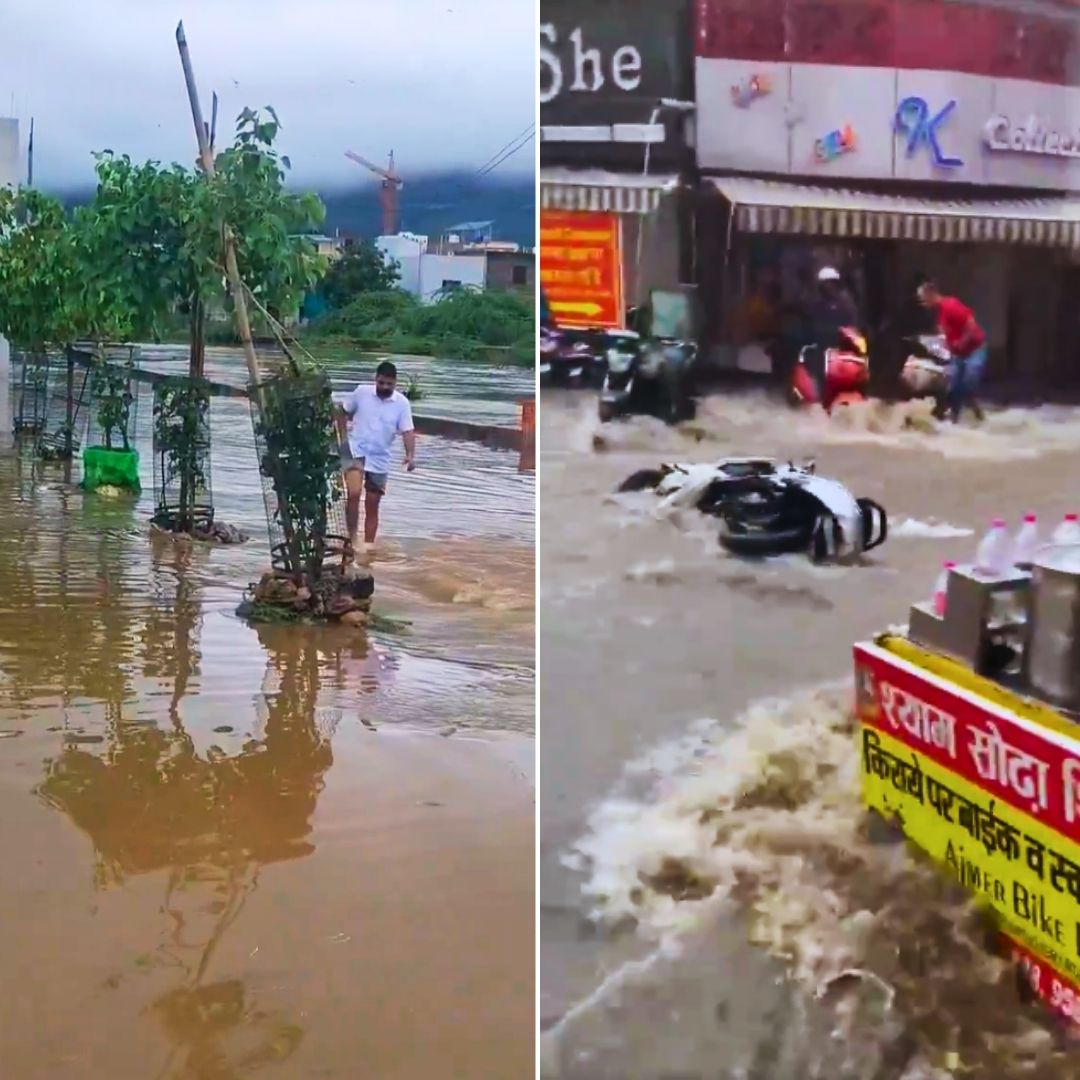Since the early hours of Friday, Ajmer district in Rajasthan has been battered by heavy monsoon rainfall, triggering widespread flooding, road blockages, and the temporary shutdown of all schools in the city and nearby areas. A boundary wall near a city drain collapsed, narrowly missing a woman, while key infrastructure such as the Jawaharlal Nehru Hospital was submerged, forcing emergency measures.
The India Meteorological Department (IMD) has issued a heavy rainfall alert for Ajmer and six other districts, with downpours expected to continue until 19 July 2025. Authorities remain on high alert as local residents deal with mounting challenges due to inadequate drainage and flood preparedness.
Ajmer Waterlogged, Hospital Flooded, Schools Closed Amid Heavy Rains
On 18 July, relentless showers flooded several areas of Ajmer and nearby Pushkar, creating traffic chaos, commercial disruption, and increasing safety concerns, especially in low-lying residential areas. Visuals shared by ANI and local media showed disturbing scenes of knee-deep water inside Jawaharlal Nehru Hospital, including within vital units like the MRI department and emergency corridors.
The hospital’s staff and patients were seen scrambling to move equipment and seek drier locations. In another shocking incident, a wall collapse near a drain narrowly missed a local woman, caught on CCTV footage now viral on social media. Ajmer District Collector Lokbandhu, in response to the situation, ordered an immediate shutdown of all schools, citing student safety and fielded engineering, health, and sanitation teams to flood hotspots. Advisory messages urged locals to ‘‘stay indoors’’ and avoid unnecessary travel.
6 Districts on Heavy Rain Alert, Pushkar Hotels Also Affected
The India Meteorological Department has placed Ajmer under an orange alert, along with six other districts, namely Kota, Dungarpur, Jhalawar, Baran, Udaipur, and Bundi. Some districts, particularly in east Rajasthan, are experiencing 135% above average rainfall since the start of July. In Pushkar, one of Rajasthan’s major tourist hubs, over 100 hotels and nearly 1,000 homes have reported interior flooding, leading to minor property damage and power outages.
To prevent river overflow, barrage gates were opened in Kota. Disaster Response Forces have been deployed, and coordination between local bodies has ramped up relief work. As per the IMD forecast, heavy precipitation is likely to persist until 19 July, and only gradual improvement is expected from 20 July onward. Locals have reported difficulty accessing essential services, shifting of patients from waterlogged health units, and prolonged power cuts in several wards.
The Logical Indian’s Perspective
Ajmer’s present crisis reflects troubling patterns of climate vulnerability, crumbling civic infrastructure, and administrative lag in climate adaptation. While rainfall is natural, disasters are man-made when preparedness is absent.
Consistently rising extreme weather calls for actionable city–level climate policies, not just seasonal alerts. Cities like Ajmer deserve drainage systems that can absorb monsoon impact, hospitals designed for resilience, and schools that don’t have to shut every downpour.
Every year, the same story: a few hours of rain, and our streets turn into rivers.#Ajmer
— Lakshay Kabra (@LakshayKab45525) July 18, 2025
Poor drainage & planning keep putting citizens at risk.
It’s time the authorities stop treating flooding as “natural” & do their duty to fix it. @RajGovOfficial @RajCMO#whyshouldwesuffer pic.twitter.com/IVao4sgXU1












